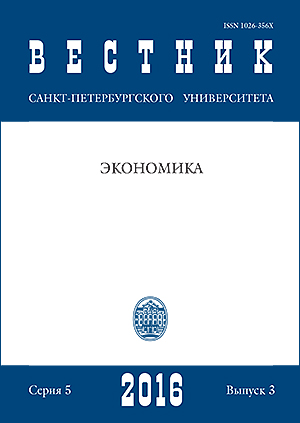Оценка институциональной эффективности индексации оплаты труда
DOI:
https://doi.org/10.21638/11701/spbu05.2016.308Аннотация
В статье рассматриваются причины расхождения законодательно установленного института индексации оплаты труда и реальной трудовой практики российских предприятий. С позиций неоинституционального экономического анализа автором выделяется и исследуется структурная и сравнительная эффективность института индексации. Систематизируются методы индексации оплаты труда в России. Проводится эмпирический анализ механизма индексации на примере 176 российских горно-металлургических предприятий. Результаты анализа позволили сделать вывод о низкой структурной эффективности института индексации оплаты труда в связи с отсутствием реальных механизмов правоприменения данной социальной гарантии (инфорсмента). Предлагаются способы устранения институциональных разрывов, разрабатывается унифицированный механизм начисления индексации оплаты труда. Оценка сравнительной эффективности института индексации оплаты труда в России показывает,
что институциональные пробелы в установлении и реализации этой социальной гарантии не случайны, а обусловлены наличием альтернативных институтов и спецификой российской институциональной среды. Библиогр. 51 назв. Ил. 2. Табл. 7.
Ключевые слова:
институциональная эффективность, индексация оплаты труда, инфорсмент, человеческий капитал
Скачивания
Библиографические ссылки
References in Latin Alphabet
Translation of references in Russian into English
Загрузки
Опубликован
Как цитировать
Выпуск
Раздел
Лицензия
Статьи журнала «Вестник Санкт-Петербургского университета. Экономика» находятся в открытом доступе и распространяются в соответствии с условиями Лицензионного Договора с Санкт-Петербургским государственным университетом, который бесплатно предоставляет авторам неограниченное распространение и самостоятельное архивирование.






